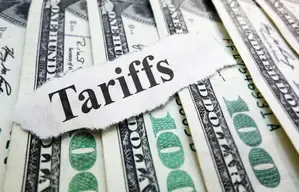Could Trump’s Tariffs Unveil Growth Opportunities for India?

Synopsis
Key Takeaways
- Tariffs may create challenges but also opportunities for India.
- MSMEs should adapt to enhance competitiveness.
- India can leverage its demographic and technological strengths.
- Diplomatic dialogue is crucial for future trade relations.
- Indian industries must focus on quality and compliance.
New Delhi, July 30 (NationPress) While US President Donald Trump’s declaration of a 25% tariff, along with penalties, on Indian imports starting August 1 has stirred worries, Indian industry leaders expressed on Wednesday that this upheaval in global trade might also unveil fresh growth prospects for the nation.
PHD Chamber of Commerce and Industry (PHDCCI) President Hemant Jain responded to this news, stating that the United States’ revised trade stance, which similarly targets other significant exporters like China, Vietnam, and Bangladesh, indicates a broader realignment in global supply chains.
"Although Indian MSMEs might experience an immediate effect, this also presents an opportunity. Global buyers are beginning to seek alternatives to reduce reliance on a few regions, and India is positioned as a credible, democratic, and scalable option," Jain remarked.
“We possess the demographic advantage, technological adaptability, and entrepreneurial strength to fulfill global demands in various sectors, from engineering products to textiles, pharmaceuticals, and electronics,” he continued.
He called on Indian industries to enhance their quality, compliance, and competitiveness, pointing out that similar tariff challenges faced by China and Vietnam could enable India to earn long-term trust and expand its global market presence.
“Let’s see this moment as a springboard rather than a setback,” he emphasized.
Gem and Jewellery Export Promotion Council (GJEPC) Chairman Kirit Bhansali adopted a more cautious stance, advocating for diplomatic engagement.
"We urge the US administration to rethink this decision and encourage both governments to engage in fruitful dialogue that protects bilateral trade and the millions of jobs reliant on it on both sides," he stated.
Experts highlight that India’s recent trade achievements, including the free trade agreement with the UK, demonstrate the nation’s capability to convert challenges into growth opportunities on the international platform.
On Wednesday, President Trump announced that the US would enforce a 25% tariff with penalties on Indian imports beginning August 1.
This announcement was made via Truth Social, his personal social media platform. Trump indicated that this action is also a penalty for India's procurement of military equipment and energy from Russia.
He claimed that India maintains some of the highest tariffs globally and imposes “the most strenuous and obnoxious non-monetary trade barriers” compared to any other country.
“Remember, even though India is our ally, we have historically conducted relatively little business with them due to their excessively high tariffs,” Trump remarked.
He also noted that the US faces a significant trade deficit with India.
This announcement follows months of discussions between the two nations, yet a mini or interim trade agreement still remains elusive.







